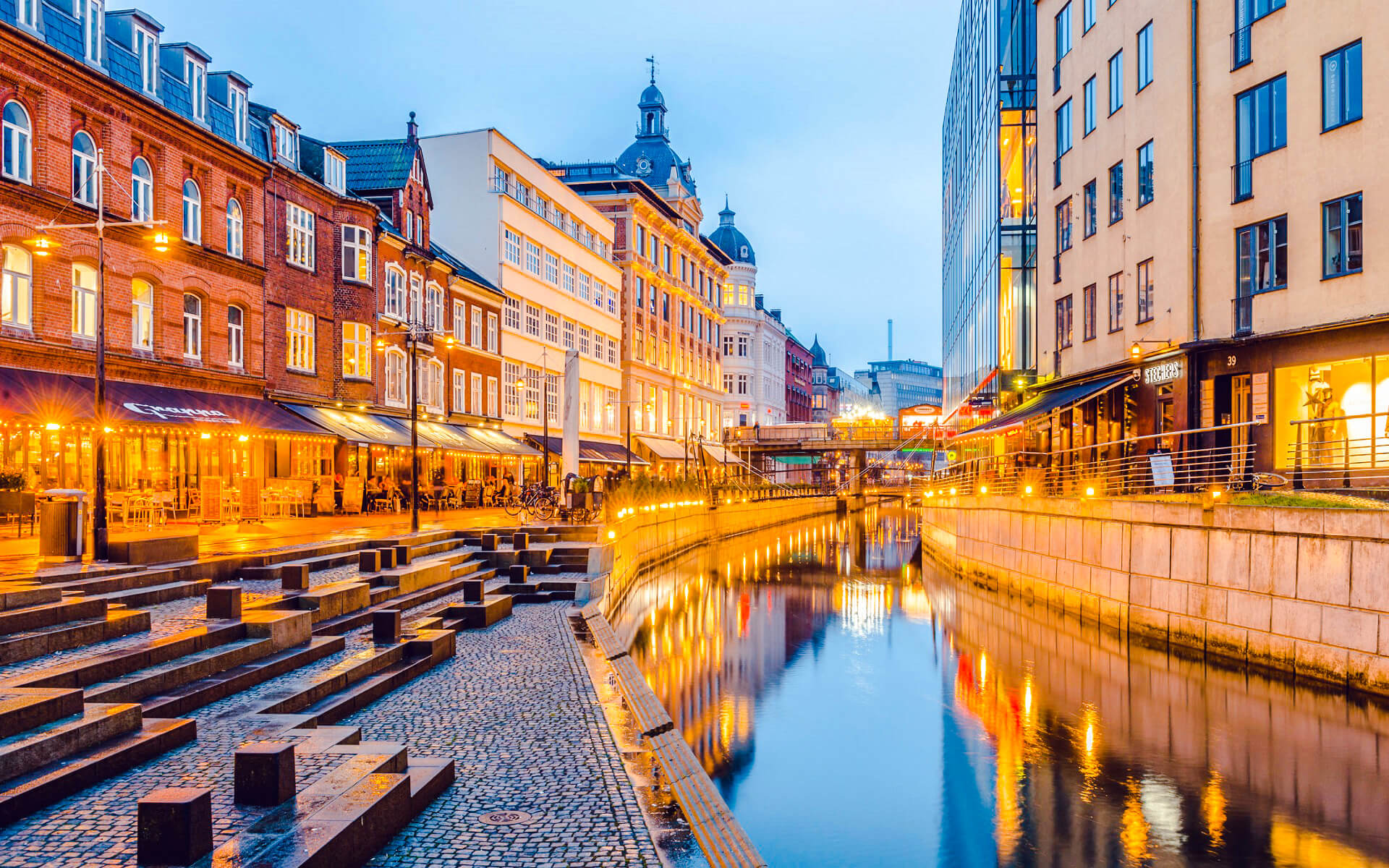Aarhus is Denmark’s second-largest city and the seat of the Aarhus municipality. It is situated in the geographical center of Denmark, 187 kilometers (116 miles) northwest of Copenhagen and 289 kilometers (180 miles) north of Hamburg, Germany, on the east coast of the Jutland peninsula. The inner urban area has 264,716 residents (as of 1 January 2016), whereas the municipal population is 330,639 people (as of 2016). Aarhus is the principal city of the East Jutland metropolitan region, which had 1.378 million people in 2016.
Aarhus’ history started as a fortified Viking town constructed in the eighth century, with the oldest written documents being from the bishopric sitting here since at least 948. The city was built on the northern sides of a fjord at a natural harbor, and for centuries, seaborne commerce in agricultural goods was the principal source of expansion. Market town rights were granted in 1441, but expansion slowed in the 17th century due to blockades and bombardments during the Swedish Wars. During the Schleswig Wars in the nineteenth century, it was seized twice by German forces but escaped destruction. As the industrial revolution took root, the city developed to become the country’s second-largest by the twentieth century.
Today, Aarhus is the region’s cultural and economic hub, as well as the major center for commerce, services, and industry in Jutland. The city is the 92nd biggest in the European Union and the 234th largest in the globe. It is also one of the top 100 conference cities in the globe. Aarhus is the country’s main industrial port in terms of container handling, as well as a major trading centre in Kattegat. Major Danish corporations have established their headquarters here, and people travel for work and recreation from all around Region Midtjylland. It is a Nordic research and education hub, and it is home to Aarhus University, Scandinavia’s biggest university, as well as Aarhus University Hospital and INCUBA Science Park. Aarhus is the Danish city with the youngest demographics, with 48,482 residents under the age of 18. It is also one of the fastest growing Danish cities, with an average annual growth rate of 4,000 persons since 2010.
Aarhus is well-known for its musical heritage. Many jazz clubs popped up across the city in the 1950s, fueled by the city’s youthful population. By the 1960s, the music scene had expanded to include rock and other genres. Aarhus became the center of Danish rock music in the 1970s and 1980s, spawning numerous notable bands such as TV-2 and Gnags. The annual eight-day Aarhus International Jazz Festival, the SPoT Festival, and the NorthSide Festival are all held in Aarhus.


